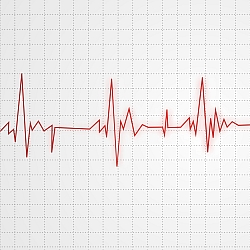Research conducted in the U.S. and Israel indicates that patients with implanted cardiac devices can safely undergo MRI scans, when a specified protocol is followed. The results of the study appear in the 4 October issue of the journal Annals of Internal Medicine (paid subscription required).
Magnetic Resonance Imaging (MRI) has been considered off limits as a diagnostic tool for more than two million people in the United States who have an implanted heart pacemaker or defibrillator. Because of the strong magnetic fields generated during scans, MRIs have been assumed to be unsafe in patients with these devices.
A team led by Saman Nazarian, a cardiac electrophysiologist at Johns Hopkins University School of Medicine in Baltimore, followed 438 people with implanted cardiac devices who had 555 MRI scans. Some 94 percent of the exams were conducted at Johns Hopkins Hospital, with the remainder performed at Rambam Medical Center in Haifa, Israel.
The researchers, from the two medical centers and National Institutes of Biomedical Imaging and Bioengineering, found that with appropriate precautions, patients with pacemakers and defibrillators can have an MRI scan with low risk of the device malfunctioning, moving, heating or causing abnormal heart rhythms due to the magnetic and radio-frequency energy generated by the test.
For devices implanted in three of the patients in the study, the energy emitted from the scanner caused the devices to reset to their default settings. The authors say this occurrence is rare, but warrants close expert monitoring during the test, and can be remedied after the test is completed. None of the three patients had device dysfunction during the long-term follow-up of between 15 and 66 weeks.
Henry Halperin, professor of medicine at the Johns Hopkins University School of Medicine and the senior author of the study, says “pacemakers made after 1998 and defibrillators manufactured since 2000 come with electromagnetic interference protection.” Clinicians also need to check the type and configuration of the leads attached to the device, since a disconnected lead in an MRI could cause the tip of the wire to overheat.
Other precautions outlined by co-author Rozann Hansford who monitors patients at Johns Hopkins during the scans include reprogramming the device to a safe mode, monitoring the patient’s blood pressure, checking electrical activity of the heart and oxygen saturation, and looking out for any unusual symptoms. After the test, the device is reprogrammed, then checked again in 3 to 6 months.
These guidelines, says Nazarian, “can be used to make MRI more available to people who could benefit from early detection of cancer and other diseases and for guiding surgeons during procedures.” He adds that “MRI is considered superior to CT scans in many clinical scenarios, especially for brain and spinal cord imaging.”
Read more: Cardiac Device Infections Linked to Higher Costs, Mortality
* * *


 RSS - Posts
RSS - Posts
You must be logged in to post a comment.